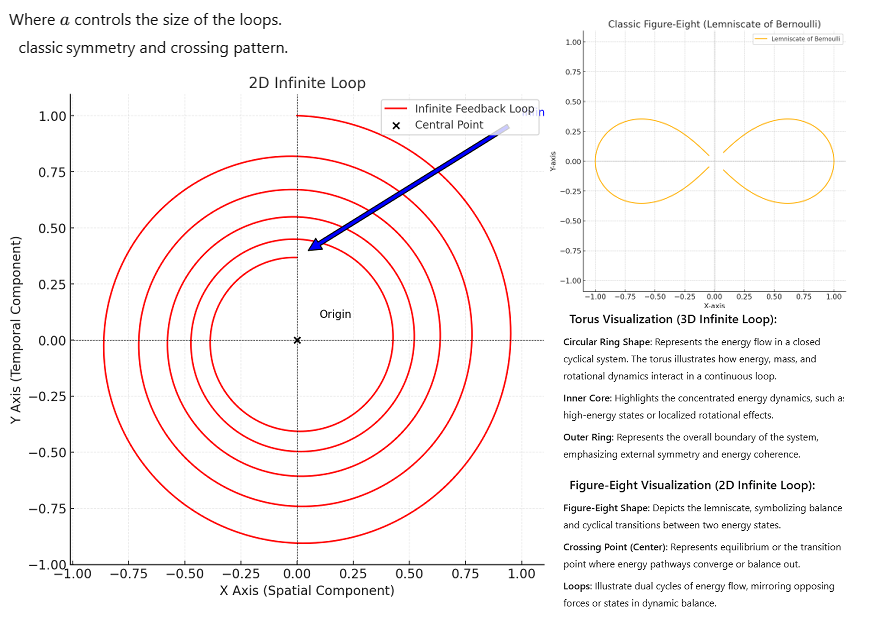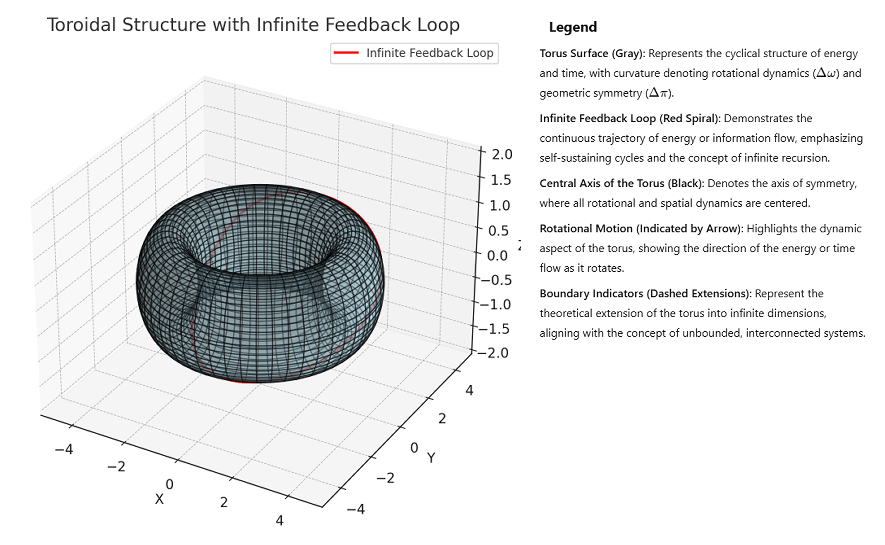import numpy as np import matplotlib.pyplot as plt from scipy.ndimage import gaussian_filter from scipy.linalg import laplace
# Constants for Toroidal Unified Energy Curvature Equation C = 3.00e8 # Speed of light (m/s) C2 = C**2
def toroidal_energy_change(delta_pi, delta_m, delta_omega, delta_r): """ Calculate the energy change using the Toroidal Unified Energy Curvature Equation. """ real_part = delta_pi * (delta_m * C2) imaginary_part = 1j * (delta_omega * delta_r) return real_part + imaginary_part
# Stress Redistribution Model
def stress_redistribution(stress_old, k, eta, time_step, num_iterations): """ Simulate stress redistribution over time using finite difference methods. """ stress = stress_old.copy() for _ in range(num_iterations): laplacian_stress = laplace(stress) stress += k * laplacian_stress - eta * (stress / time_step) return stress
# Data Preprocessing
def preprocess_geometric_data(fault_zone_data): """ Extract and normalize geometric data (e.g., \u0394\u03c0) using Fourier analysis. """ delta_pi = np.fft.fft2(fault_zone_data) delta_pi = np.abs(delta_pi) / np.max(np.abs(delta_pi)) # Normalize return delta_pi
def preprocess_seismic_data(seismic_data): """ Smooth seismic data using Gaussian filters. """ return gaussian_filter(seismic_data, sigma=2)
def preprocess_electromagnetic_data(em_data): """ Smooth electromagnetic data using Gaussian filters. """ return gaussian_filter(em_data, sigma=2)
# Simulation Parameters SIMULATION_CYCLES = int(1e6) # Number of iterations TIME_STEP = 0.001 # Time step in seconds
# Example Inputs fault_zone_data = np.random.rand(100, 100) # Example geometric data seismic_data = np.random.rand(100, 100) * 10 # Example seismic data electromagnetic_data = np.random.rand(100, 100) # Example EM data
# Preprocess Data delta_pi = preprocess_geometric_data(fault_zone_data) preprocessed_seismic = preprocess_seismic_data(seismic_data) preprocessed_em = preprocess_electromagnetic_data(electromagnetic_data)
# Initial Stress Field initial_stress = preprocessed_seismic + preprocessed_em
# Stress Redistribution Simulation Parameters K = 0.1 # Stress diffusion constant ETA = 0.05 # Damping factor
# Run Stress Redistribution Simulation redistributed_stress = stress_redistribution(initial_stress, K, ETA, TIME_STEP, SIMULATION_CYCLES)
# Visualization plt.figure(figsize=(12, 6)) plt.subplot(1, 2, 1) plt.title("Initial Stress Distribution") plt.imshow(initial_stress, cmap="viridis") plt.colorbar(label="Stress (Pa)")
plt.subplot(1, 2, 2) plt.title("Redistributed Stress") plt.imshow(redistributed_stress, cmap="viridis") plt.colorbar(label="Stress (Pa)")
plt.tight_layout() plt.show()
# Example of Toroidal Unified Energy Curvature Equation # Parameters example_delta_pi = 1.2 # Example geometric scaling factor example_delta_m = 5.0 # Example mass change (kg) example_delta_omega = 2.0 # Example angular velocity change (rad/s) example_delta_r = 0.3 # Example radial distance change (m)
energy_change = toroidal_energy_change(example_delta_pi, example_delta_m, example_delta_omega, example_delta_r) print(f"Energy Change: {energy_change.real:.2e} J + {energy_change.imag:.2e}i J") |

















